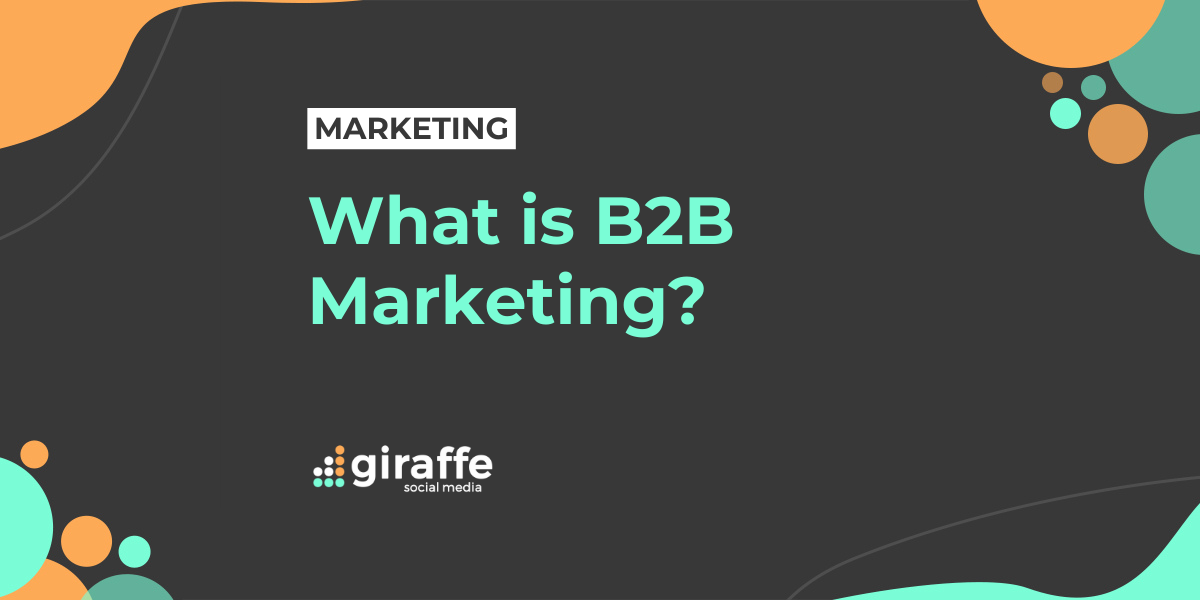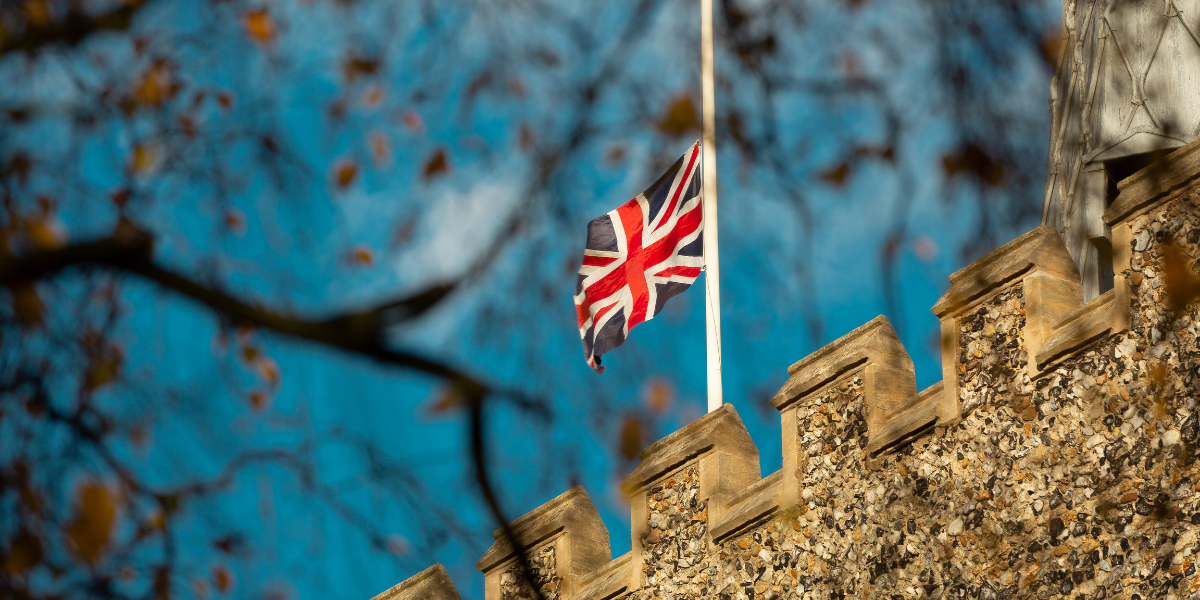B2B marketing definition: Business to business marketing; marketing your products or services to other businesses or organisations, rather than individual customers.
Business-to-business (or B2B) marketing outlines a business selling its services or products to other businesses/organisations. B2B marketing covers a variety of industries, including companies ranging from Software-as-a-Service (SaaS) to office supplies to security solutions. Many companies, especially bigger and more global companies, offer a range of products and services that can put them into the B2B and B2C (business-to-customer) categories at once.
B2B marketing is all about having a creative and intellectual approach to reach marketing goals through traditional and digital marketing channels. It’s important to build relationships and maintain a reputation that will help a business develop. B2B marketing is primarily aimed at “any individual(s) with control or influence on purchasing decisions,” ranging from “low-level researchers all the way up to the C-suite.”
Traditional B2B Marketing
Before the rise of social media, traditional – or offline – marketing channels encompassed the vast majority of a marketer’s role. Print advertising, TV and radio advertisements, and outdoor advertising are just three examples of offline advertising.
While traditional offline marketing is still important and by no means obsolete, it cannot thrive on its own in the digital age. Marketing strategies typically involve a mixture of offline and online/digital marketing, especially for industries where offline events and publishing are important for B2B networking.
B2B Marketing on Social Media
Social media marketing is arguably the best way to advertise as a business or brand in the digital age. Alongside your offline marketing efforts, social media marketing will help you build a brand identity, spread your business’s values and messaging, and generate leads and sales. Done well, social media can grow your business exponentially.
The top 5 social media channels for B2B are LinkedIn, Facebook, Twitter, YouTube, and Instagram. Sagefrog’s 2020 marketing report showed that 86% of B2B marketers use LinkedIn and trust it far more than any other channel.
LinkedIn is the hub of B2B marketing and the corporate world on social media, due to its focus on building a professional network between individuals and companies. Out of LinkedIn’s almost-740 million global users, “90 million LinkedIn users are senior-level influencers and 63 million are in decision-making positions,” making it a great place to market your B2B products and services.
As with all social media platforms, posting consistently and often on LinkedIn as a business will help your engagement, but for B2B companies it will also help your chances for network building and lead generation. Companies should post at least once a week – earning twice the amount of engagement than companies who don’t – and having an active and complete LinkedIn page will help you see 5x more page views. Struggling knowing when to post? Wednesdays are the best days to post on LinkedIn!
LinkedIn Advertising
B2B LinkedIn paid advertising campaigns can have two objectives: brand awareness or lead generation. LinkedIn is the top social media network for lead generation, with special thanks to its impressive and career-focused audience targeting capabilities. The nature of LinkedIn allows for drilling down into specifics for ad targeting, including certain job titles and education history.
Facebook is the long-reigning king of social media, boasting 2.6 billion monthly active users. With a vast range of organic and paid marketing options, and such a huge user base, Facebook is a great tool for B2B marketers to tap into certain demographics and audiences. The audience targeting options available for Facebook ads are unparalleled by other social media networks in its sheer versatility.
Be sure to read all about how the new Apple iOS 14 updates can affect your Facebook advertising campaigns.
The third most popular platform for B2B marketing, Twitter, is predominantly considered a B2C platform but is in fact used by 75% of businesses as a marketing tool. Twitter sees 192 million monthly active users, giving you a large pool of users to narrow down in your ad targeting and organic reach.
Orientation Marketing recommends B2B users utilise Twitter for: thought leadership, building brand awareness, social selling, and traffic building. Twitter itself points out that we’re moving away from the desktop computer in the business world and a majority of business professionals rely on their mobile devices more than their desktops. In terms of fast-paced, easily accessible content, Twitter is perfect with its short post lengths and constant updating.
Other Platforms
Essentially, you can use any social media platform for B2B marketing as long as your target audience is active on that platform. From Instagram to Pinterest to YouTube, it’s possible to use these platforms in your B2B marketing strategy. Owned by Facebook and paired with Facebook Business Suite, Instagram marketing can definitely include B2B spheres so long as you know your specific audience is using the platform.
5 Key Points for B2B Marketers to Consider
-
Create a brand identity, message, and voice that sticks.
Your social media posts and messaging should reflect and contribute to your brand identity and voice. When crafting brand messaging made to resonate with your target clients, make sure to consider your product/service’s value, your target audience, your ideal tone of voice, and more. Your B2B brand messaging should be “consistent, informed, purposeful, and authentic”.
Around “77% of B2B marketing leaders say branding is critical to growth”; never overlook the importance of branding as part of your social media presence and overall marketing strategy.
-
Know the audience you’re reaching out to.
Businesses need to know their audiences, including how they spend company money and who the key decision-makers are. In the B2B sphere, the purchase journey can be more difficult to achieve, as major decisions often require permission and sign-off from multiple senior-level individuals as opposed to B2C markets. Conducting in-depth research into your target audience and potential customers is key in developing a B2B marketing plan.
-
Images sell products; make your projects interactive and impressive.
We all know that visual content is king on social media, especially on platforms such as Instagram. Images, infographics, videos, and more are all key post formats for marketing plans, including in B2B industries. You can’t just rely on promoting products and services; in fact, a range of purposes for your content is what helps keeps your audience engaged and likely to become leads and brand loyalists. You want to build relationships with current and future clients, and visual, interactive content is one of the best ways to achieve this goal in the long term.
-
Stay creative and consistent
Consistent posting is an important best practice for all social media platforms to keep your followers interested, active, and engaged. However, don’t think it’s quantity over quality. Your posts should be creative while using historical data, audience behaviour, and industry research as a foundation. DPR&Co points out that “being creative in B2B marketing means designing a memorable experience for clients.” Remaining creative in the face of serious business discussions and product promotions can be tough, but forming emotional connections through your post will grow your brand over time and help customer retention and lead generation.
-
Have a personality! Speak to the human side of the business world.
While advertising to other businesses it’s easy to forget about the human side of who you’re reaching out to, and, equally, forget your own human side while building brand identity. Make sure your personality comes across in your social media presence! We’re moving towards a time where B2B is as much about the people behind the company as it is the companies themselves, especially on LinkedIn with the importance of personal professional profiles. Find a brand personality that reflects the humanity, personability, and values of the people behind the company. Driving meaningful customer relationships is helped greatly by building up a brand personality and identity over time.
Are you a B2B brand struggling with social media marketing? Get in touch with Giraffe Social Media to learn more about how we can help you.
Editor’s note: This article was published in 2013 and has been updated for accuracy and relevance in May 2021.






